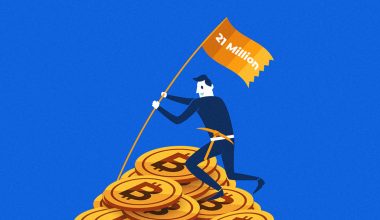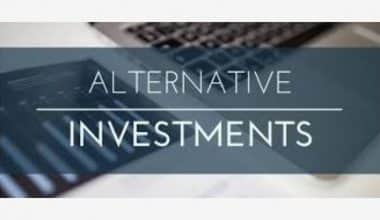When it comes to investment, the first stage is to examine the many definitions of risk, determine how to quantify it, and then begin investigating a few low-risk investing opportunities. Risk can be defined in many different ways. Simply expressed, the risk is the likelihood of an undesirable event. In the world of finance, it may be when an asset’s price moves in the opposite way of the one the investor predicted. In this article, we’ll discuss the top 10 low-risk investments with high returns
What is Low-Risk Investment
Investments that are considered low-risk are, in general, safer than their alternatives. These investments offer significant returns in addition to giving the investor the assurance that they won’t lose money due to volatility or other uncontrolled circumstances.
It is important to first identify the investment’s aim before determining the many categories of risk it entails. Consider a stock investor who faces a variety of risks, including simple market risk, economic risk, company default risk, etc. Each category of risk can be measured using different techniques. Using it as a stand-in for actual risk measurement is the most typical technique to describe and quantify risk.
The most popular definition of risk is variation. We can determine the total risk of an investment by adding together all the risks. Add all the risks to a portfolio and check to see if they fall within the risk tolerance of the investors, in this example, low-risk investments.
Factors to Think About for Low-Risk Investors
#1. Recognize Your Tolerance for Risk
Even if each of the aforementioned investments is regarded as low risk, there is still a range of risks that can be involved. It will be much safer to invest your money in a certificate of deposit that offers a guaranteed rate of return rather than trying your luck with dividend aristocrats.
In other words, even a “low-risk” investor should think carefully about how much “risk” they can handle and choose an investment accordingly.
#2. Understand Your Time Frame
When it comes to investing, it’s also crucial to understand when you want to access your money By using a few instances, let’s better comprehend the low-risk investment possibilities.
#3. Consider the Type of Investment
Let’s take a look at the portfolios of two funds to see the many types of investments that investors make. At the moment, they divide and spread their money amongst Alternative Investments (for high-risk takers), Global Allocation (for medium-risk takers), Equity Funds (for medium-risk takers), and Fixed Income funds (for low-risk takers). We can determine which assets are hazardous and which are not particularly risky if we reasonably break down the portfolios of each of these funds.
#4. Check Figure
When we examine their data, we can see right away that both of the bond-invested funds have consistently performed for the past year and beyond. If I were an investor who had put money into these funds a year ago, I would be somewhat worse off now than I would have been.
That indicates that throughout the past year, the fund has been successful. These funds invest in treasury bonds, among other types of government bonds.
Benefits and Drawbacks
By going over the benefits and drawbacks of investing in low-risk investment options in the discussion that follows, let’s thoroughly understand the idea.
Benefits
- These investments make sure that the investor’s funds are safe from potential losses.
- These investments tend to have less volatility than extremely risky assets.
- Overall, a person’s portfolio balance is kept intact. A defensive stock is a term used to describe the stock that is selected to provide some stability to a portfolio.
- These assets are frequently the last to be impacted in the event of a crash or significant market decline. This offers the investor adequate time to comprehend market movement and adjust as necessary.
Drawbacks
- Low risk in the stock market is sometimes associated with modest or low returns. Investors frequently fall under the illusion that the money they make without taking any risks is sufficient because of this.
- It deprives the investor of options that could ultimately be more profitable.
- Chasing low-risk investment opportunities, however, only results in investors missing out on other slightly riskier, but multi-bagger-worthy, opportunities.
These stocks typically offer little returns when the market is in a bull run and trending in that direction. Investors lose out on chances to make significant gains because the movement on such investments is small, regardless of market change.
Best Investments with Low Risk
#1. Savings Bonds in Series I
- Risk degree: extremely low
- Potential gains are based on the inflation rate.
Inflation is tracked by the consumer price index (CPI), and I bonds are a unique kind of U.S. savings bond with a variable interest rate that is intended to do just that.
On the basis of two interest rates, they provide returns: a variable interest rate that adjusts every six months to reflect the current rate of inflation, plus a fixed rate that stays the same for the duration of the bond’s 30-year life.
I bond also profit from compounding every two years: Twice a year, the bond’s value is increased by earned interest, progressively raising the principal on which you earn interest. Before cashing out, you
must keep the bond for at least a year; if you do so before five years have passed, there is a modest penalty.
#2. Accounts with High Yields
- Risk degree: extremely low
- Potential profits: Depending on current interest rates, the best high-yield savings accounts may provide moderate returns.
High-yield savings accounts provide an unequaled mix of a low rate of return on your investment, limitless liquidity (you can withdraw money at any time), and the support of the Federal Deposit Insurance Corp. (FDIC), which guarantees deposits up to a predetermined amount.
Parking your emergency fund or cash you need for immediate expenditures in a high-yield savings account makes a lot of sense because there is almost no chance of losing money and the possibility of small gains (depending on current rates).
Depending on the state of the market, high-yield savings accounts can offer a wide range of interest rates. On the other hand, your capital and interest earned will never go down in value.
#3. Certificates of Deposit (CDs)
- Very low-risk
- Potential profits: High-yield savings accounts can be matched or surpassed by the greatest CDs in terms of yields.
These time deposit accounts give you the option to invest your money for a predetermined amount of time at a specific rate. There will be an early withdrawal penalty fee if the money is withdrawn before the maturity date. Varying financial institutions will have varying restrictions and costs for various CD varieties, including ordinary, bump-up, step-up, high-yield, jumbo, no-penalty, and IRA CDs, for instance. A relatively low-risk investment choice, certificates of deposit are insured by the FDIC up to statutory limits.
#4. Mutual Money Market Funds
- Risk level: Minimal
- Potential returns: Low credit risk mutual funds that invest in a variety of short-maturity fixed-income securities make up modest money market mutual funds. They typically offer modest interest rates, but unlike other types of mutual funds, there is virtually little opportunity to profit from appreciation.
Because of the types of investments they make, this type of investment gives a lot of liquidity and is thought to be quite safe with very little chance of losing money. But they are not insured by the FDIC, in contrast to savings accounts or CDs.
#5. Treasury Inflation-Protected Securities
- Risk degree: extremely low
- Potential gains are based on the inflation rate.
The U.S. Treasury issues Treasury inflation-protected securities (TIPS), which, as I bond, use a unique mechanism to guarantee that returns keep pace with the rate of inflation. TIPS have maturities ranging from five to thirty years.
The majority of bonds make the promise to refund your initial investment, or “principal,” along with a fixed or variable amount of interest. TIPS have a fixed rate of interest, but the value of their principal fluctuates in accordance with the CPI-measured rate of inflation.
If the principal at maturity is greater than your initial investment, you keep the excess. You are given your initial investment back if the principal amount is equal to or less than the initial principal investment. TIPS pays interest on the adjusted principal every six months.
#6. Corporate Bonds of Investment Grade
- Level of risk: Moderate
- Potential rewards range from low to high.
Fixed-income securities known as corporate bonds are issued by openly traded firms. Investment grade, also known as high grade, refers to a public business’s bonds when it has a very excellent credit rating. This denotes that the company is quite likely to continue paying interest during the bond’s term and refund the principal at maturity.
After carefully examining a company’s finances and stability, credit rating agencies like Moody’s, Standard & Poor’s, and Fitch award credit ratings. However, a company’s credit rating could be reduced tomorrow even though its bond is currently regarded as investment grade. Because of this, this investment kind is riskier than the others mentioned above.
#7. Preferred Stocks
- Level of Risk: Moderate
- Potential rewards range from low to high.
When it comes to preferred stocks combine the traits of stocks and bonds into a single asset, offering investors a stable stream of income payments as well as the chance for the share value to rise over time.
Preferred stock dividends have preferential tax treatment since they are typically taxed at a lower rate than bond interest. Preferred stock shares are issued with a fixed face value.
Although preferred stock dividends may also be lowered or canceled in the event of a company profit loss, common stock payouts are always reduced or abolished first.
#8. Dividend Aristocrat
- Level of risk: Moderate
- Potential returns: High to Moderate
While many publicly traded corporations distribute dividends, the dividend aristocrats are unique. With regard to their dividend payouts, these businesses have displayed exemplary long-term stability and dependability.
When a public firm has consistently grown its yearly dividend payments for at least 25 years, it is referred to be a dividend aristocrat. There are additional requirements, including as inclusion in the S&P 500 index and a $3 billion minimum market capitalization, but investors should focus on these.
is that these businesses have consistently offered high dividend yields over time.
Although investing in publicly traded companies can be riskier than other options on our list, dividend aristocrats can offer you consistent cash flow regardless of what the stock market is doing, as well as the potential for long-term appreciation.
#9. Fixed Annuities
- Risk degree: extremely low
- Possible returns: Moderate
A common form of annuity contract, fixed annuities can also be helpful for medium-term financial objectives and are widely utilized for retirement planning. A fixed annuity, offered by insurance and financial services firms, ensures a fixed rate of return over a predetermined time period, independent of market conditions.
An annuity’s life is divided into two phases: the accumulation phase and the payout phase. First, you put money into your annuity over time while earning interest that increases the value of your account tax-deferred. The payout phase could consist of a single, one-time payment or a series of ongoing, recurring payments.
#10. Cash Management Account
A money market account is a type of mutual fund designed for investors who don’t want to lose any of their investment’s principal. In order to make keeping your money with the fund desirable, the fund also makes an effort to pay out a little amount of interest. The fund’s objective is to keep each share’s Net Asset Value (NAV) at $1.
Although these funds aren’t foolproof, they have a proven track record of safeguarding the true value of your money.
#11. Municipal Bonds
State or municipal bonds don’t utilize credit cards to borrow money when they need to. The government body instead releases a municipal bond. These bonds, also known as munis, are not subject to Federal income tax, making them a wise choice for anyone looking to reduce their tax exposure.
Low-Risk Investment High Return
Stocks that pay dividends are a fantastic way to diversify your investment portfolio and generate passive income. They can produce substantial profits over time and are low-risk investments. The following are some arguments in favor of including dividend stocks in your portfolio:
- Dividends are sums of money given to stockholders by the business in which they own shares. Dividends are frequently distributed by companies, and they are normally far more stable than other types of investment income (like interest).
- If held for more than a year, dividends are taxed at a lower rate than capital gains. When looking for large yields from low-risk investments, this makes them an alluring substitute for interest-bearing accounts or bond yields!
- By gradually reinvesting these payments, you can even increase equity by reinvesting your dividends back into the business.
How can I Double my Money without Risk?
- Mutual funds
- National Savings Certificates (NSC)
- Equity Market.
- Kisan Vikas Patra (KVP)…
- Gold Exchange
- Traded Funds (ETFs)
- Real Estate
- Corporate Bonds
- PPF, or the Public Provident Fund
What is the #1 Safest Investment?
Treasury Bonds, Bills, and Notes
Considered to be among the world’s safest investments, U.S. Treasury securities.
What are the 4 types of Investment?
- Growth investments,
- Shares
- real estate
- and defensive investments
How can I Invest 20k?
Bond ETFs in Z. Bonds are excellent investments if you require a specific quantity of money at a specific time since they include a defined date when the borrower will repay the bond’s face value.
Stock exchange-traded funds (ETFs), individual stocks, real estate investment trusts (REITs), and cryptocurrencies are included in that order.
How can I grow my money fast?
- Start your investments early. First and foremost, you must begin investing and saving early in life.
- Refuse unnecessary debt.
- Avoid placing all of your eggs in one basket: Diversify Your Investment Portfolio.
- Fixed Deposits (FD) and Recurring Deposits (RD)…
- Mutual Funds.
- Savings accounts with high rates of interest.
- Stocks or Equities.
- Invest Wisely.
How to invest in Bitcoin?
Investors in Bitcoin require a cryptocurrency exchange account, personal identification documents if utilizing a Know Your Client (KYC) platform, a secure internet connection, a payment mechanism, and an independent digital wallet.
How to Invest in cryptocurrency?
- Choosing a cryptocurrency exchange to utilize
- Creating an account on the exchange.
- Use fiat currency to fund your account.
- Choose the cryptocurrency you want to purchase
- Place a buy order for the cryptocurrency of your choice.
Which crypto is best to invest in now?
- Ethereum is the best cryptocurrency to invest in for long-term growth according to Web3 developers.
- Cardano is an innovative blockchain with increasing developer activity.
- IOTA is an IoT device payment protocol.
- Blockchain interoperability is facilitated by the cryptocurrency project Polkadot.
What is the Safest Cryptocurrency?
The most well-known cryptocurrency, bitcoin, is also one of the safer investments in the crypto market because of its widespread recognition. But like all cryptocurrencies, the value of Bitcoin can quickly and significantly fluctuate.
How do I Invest in Crypto to become rich?
- Presale Investing: Purchase recently launched cryptocurrency tokens at presale rates.
- Day trading: Buy and sell cryptocurrencies continuously to make consistent gains.
- HODLing: Invest in cryptocurrencies and hold them for a long time.
- Earn Passive Income on Dormant Crypto Holdings with Staking and Interest.
Conclusion
No investment is completely risk-free, but the one that gives you the most peace of mind is the finest low-risk investment. You can choose a low-risk investment that fits your comfort level and is in line with your long-term objectives with the aid of a financial advisor.
Related Articles
- 10 BEST MULTIPLE STREAMS OF INCOME IDEAS IN 2023
- Debt Capital Markets (DCM): Detailed Guide!
- Types of Mutual Funds: 31+ Different Types (+ Quick Guide)
- Dividend Mutual Funds: Definition, How they Work, Pros & Cons
- High Yield Investments: How to Spot High Yield Investments (With Best Options Updated!)






